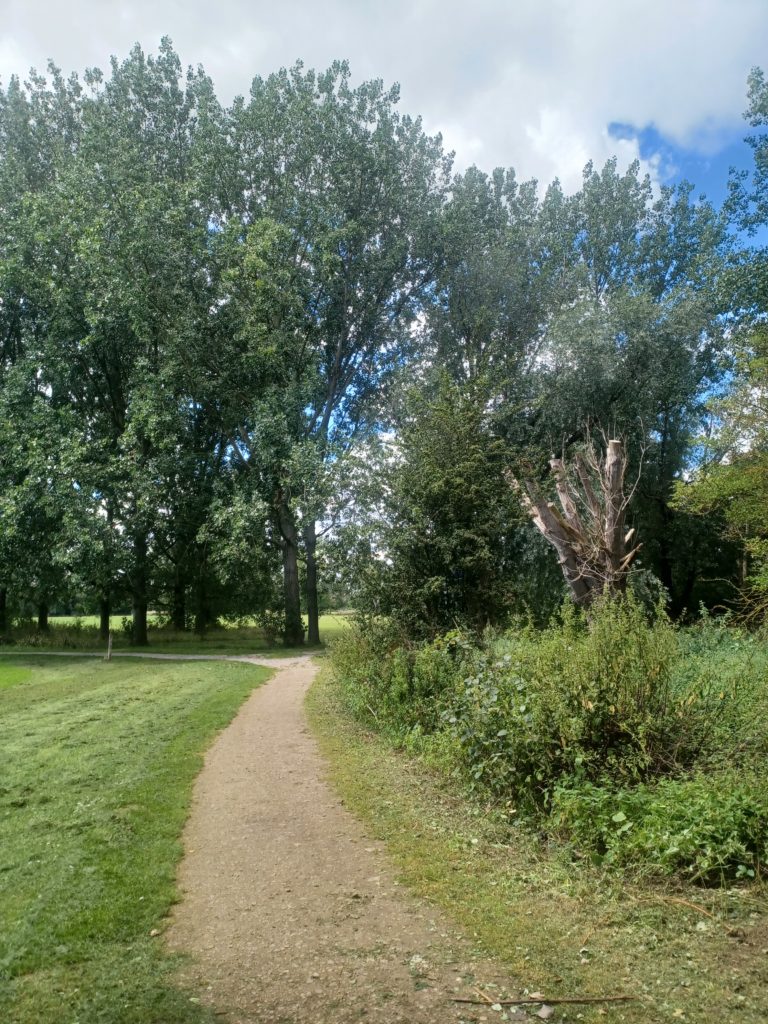
I was surprised to discover that black poplar trees (see blog 31) are considered to be the most endangered tree species in England. By this designation the Forestry Commission/or maybe the Woodland Trust mean trees in the ‘wild’ that are a result of natural pollination, rather than those cultivated by woodland nurseries. The seeds of the black poplar are wind blown as a means of distributing the seeds, these being covered in a small mass of white downy material that accumulates below trees where the seeds have not been dispersed by wind. The term ‘black’ poplar is not an obvious one to explain, although the bark of the trunk can appear very dark when viewed from some angles in certain light conditions. The leaves of black poplar are shiny green and symmetrical. It is hard to believe that by two months from now the trees in the photo above will have no leaves and gales will be relentlessly bending and twisting the twigs and branches. This is, of course, why Nature has evolved deciduous tress as leaves in winter would be able to only produce a little sustenance through photosynthesis and would endanger the stability of the tree in high winds.
I am having two weeks off, one visiting the North Yorkshire coast, the other catching-up.